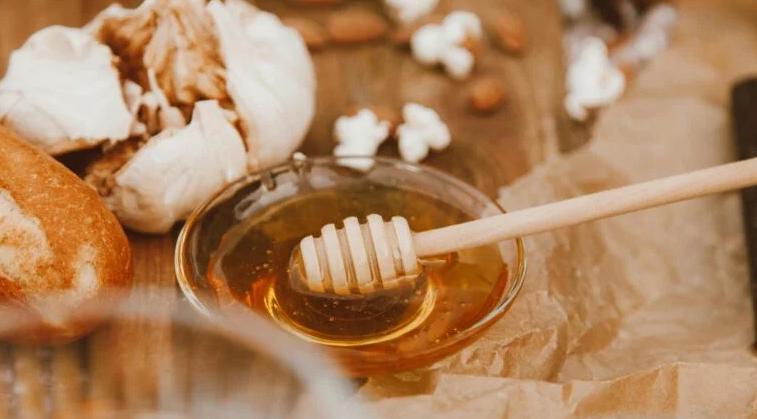Brief Overview of Mielado
Mielado, a natural sweetener often derived from the nectar of various plants and trees, holds a unique place in culinary traditions. Known for its distinct, rich flavor, this honey-like substance is commonly produced from tree saps or the nectar of plants like agave and palm. With a long history in indigenous cultures, mielado offers a healthier, natural alternative to processed sugars. Its unique production methods and versatility in food and medicine have made it a valued ingredient worldwide.
Why Mielado is Gaining Popularity
In recent years, the demand for natural, unprocessed sweeteners has soared. Consumers are moving away from refined sugars and artificial sweeteners, seeking healthier, organic alternatives. Mielado, with its earthy, caramel-like flavor and natural origins, fits this trend perfectly. Its artisanal qualities and traditional methods of production appeal to those looking for authenticity and health benefits. The rise of mielado reflects a broader shift toward organic, plant-based ingredients that not only taste great but also offer potential health benefits.
Purpose of the Article
This article will explore the fascinating world of mielado, delving into its rich history, traditional and modern production methods, and diverse culinary and medicinal uses. We will also examine its nutritional profile, the benefits and drawbacks, and tips for choosing and storing this natural sweetener.
What is Mielado?
Defining Mielado
The word “mielado” comes from the Spanish term for “honeyed” and generally refers to a thick, syrupy substance derived from plant sap or nectar. Depending on the region, mielado can vary in consistency, flavor, and color, often resembling dark honey or molasses. While it shares similarities with honey, it is distinct due to its plant-based origins. Unlike traditional bee-produced honey, which is made from flower nectar, mielado is often derived from trees like palm or agave. In some places, the term may also refer to syrup produced by bees, though this varies by region.
Types of Mielado
Mielado from Plants
Mielado can be derived from various plant sources, each offering a unique flavor and nutritional profile. Some of the most popular sources include:
- Agave: Often called “agave mielado,” this is a syrup extracted from the agave plant, commonly used as a natural sweetener in beverages and desserts.
- Palm Trees: In certain regions, palm sap is boiled down into a rich syrup called palm mielado, which has been used for centuries in cooking.
- Other Trees: Maple and birch trees can also produce a type of mielado, although they are more commonly processed into maple syrup.
Mielado from Bees
While mielado traditionally refers to plant-based syrups, some cultures use the term for honey produced by bees. This version is thicker and richer than standard honey, often collected from specific trees or flowers, giving it a distinctive flavor profile that differentiates it from regular honey.
Nutritional Profile
Mielado is rich in natural sugars like fructose and glucose, providing a quick energy boost. It also contains small amounts of vitamins and minerals such as calcium, magnesium, and potassium. Compared to other sweeteners, mielado offers a relatively low glycemic index, making it a better option for those managing blood sugar levels. Additionally, it may contain antioxidants, particularly when made from tree saps, which can contribute to its potential health benefits.
The History of Mielado
Ancient Origins
Mielado has deep roots in indigenous cultures, where it was traditionally used as a sweetener and medicine. In ancient times, harvesting sap from trees and boiling it into syrup was a common practice in Latin America and Southern Europe. This sweetener was not only a food source but also played a role in religious ceremonies and rituals.
Mielado in Different Cultures
Mielado has been a staple in various regions, including Latin America, Southern Europe, and parts of Africa and Asia. In Mexico, for instance, agave syrup has been used for centuries, both as a food and as an ingredient in traditional medicine. In the Mediterranean, palm syrup, often called “miel de palma,” has been a key component of local cuisine. Different regions have developed their own versions of mielado, each reflecting the unique plants and trees native to the area.
Mielado in Modern Times
With industrialization, the production of sweeteners shifted toward refined sugars, and traditional products like mielado became less common. However, in recent years, the rise of artisanal and health-conscious food movements has reignited interest in this ancient sweetener. Today, small-scale producers focus on traditional harvesting methods, offering high-quality, organic mielado that appeals to consumers looking for natural alternatives.
The Process of Making Mielado
Traditional Methods
The traditional process of making mielado involves collecting sap or nectar from plants or trees, then boiling it down to a thick, syrupy consistency. For example, in the case of agave mielado, the heart of the agave plant is roasted or heated to extract its juice, which is then reduced through simmering. Similarly, palm sap is boiled for hours to concentrate the sugars. These methods preserve the natural flavors and nutrients of the sap.
Modern Industrial Production
In contrast to traditional methods, modern industrial production of mielado often involves mechanization and the addition of preservatives to extend shelf life. These products are processed more quickly and can include additives to alter their flavor or consistency. While convenient for mass production, these methods may compromise the flavor and nutritional quality of the syrup.
Sustainability and Ethical Considerations
The production of mielado raises important environmental concerns. Harvesting tree sap can harm the plants if not done sustainably. Some producers have adopted more ethical practices, ensuring that the trees or plants are not damaged and can continue to produce sap year after year. Consumers are increasingly seeking out mielado from producers who prioritize sustainability and ethical farming practices.
Uses of Mielado in Cooking and Daily Life
Culinary Uses
Sweetener in Beverages
Mielado makes an excellent sweetener for drinks such as tea, coffee, or cocktails. Its rich flavor can enhance the taste of beverages without the need for refined sugar. In Latin American cuisine, it’s often used in refreshing drinks like agua fresca.
Cooking and Baking
Mielado is versatile in the kitchen, used in everything from marinades to desserts. Its caramel-like flavor pairs well with savory dishes, especially when used as a glaze for meats or roasted vegetables. It’s also a favorite in baking, adding moisture and sweetness to cakes, cookies, and pastries.
Health and Medicinal Uses
Historically, mielado has been used in traditional medicine for its potential healing properties. It’s believed to have antibacterial effects, making it useful in treating wounds or sore throats. Some also use it as a natural energy booster due to its high sugar content and nutrient profile.
Non-Culinary Applications
Beyond the kitchen, mielado has found its way into skincare products, valued for its moisturizing properties. In some cultures, it plays a role in religious or cultural rituals, symbolizing prosperity or fertility.
Benefits and Potential Drawbacks of Mielado
Health Benefits
Mielado offers a range of health benefits. Its natural sugars provide energy without the sharp blood sugar spikes associated with refined sugars. It also contains trace minerals and antioxidants, which can support overall health when consumed in moderation.
Concerns and Considerations
Allergies and Sensitivities
Some people may be allergic to plant-based mielado, particularly if it comes from sources like agave or palm. Those with sensitivities to these plants should exercise caution.
High Sugar Content
While natural, mielado is still high in sugar, so it’s important to monitor portion sizes. Excessive consumption can lead to health issues like weight gain or blood sugar imbalances.
Mielado vs. Other Sweeteners
Compared to honey, maple syrup, and artificial sweeteners, mielado offers a unique flavor and nutrient profile. It’s a great option for those looking for a less processed alternative to refined sugar, though it is sweeter than some plant-based syrups.
How to Choose and Store Mielado
Identifying Quality Mielado
When shopping for mielado, look for organic, unprocessed varieties. These retain the most nutrients and flavor. Be wary of products with added sugars or preservatives, as these are often lower in quality. Click here for ecopas
Best Practices for Storage
Mielado should be stored in a cool, dark place to preserve its quality. It can crystallize over time, but gently warming it can return it to its original consistency. Properly stored, mielado can last for up to two years.
Where to Buy Mielado
Local and Online Sources
Mielado can be found at local farmers’ markets or online specialty stores. Look for artisanal products made by small-scale producers who use traditional methods.
Supporting Small-Scale Producers
By purchasing mielado from small, sustainable farms, you help support ethical practices and the preservation of traditional production methods. These producers often offer higher-quality products with better flavors and nutritional value.
Conclusion
Mielado is more than just a sweetener—it’s a symbol of cultural heritage, sustainable farming, and health-conscious eating. Its rich history and diverse uses make it a valuable addition to any kitchen. With its natural sweetness and potential health benefits, mielado offers a flavorful, wholesome alternative to processed sugars.





